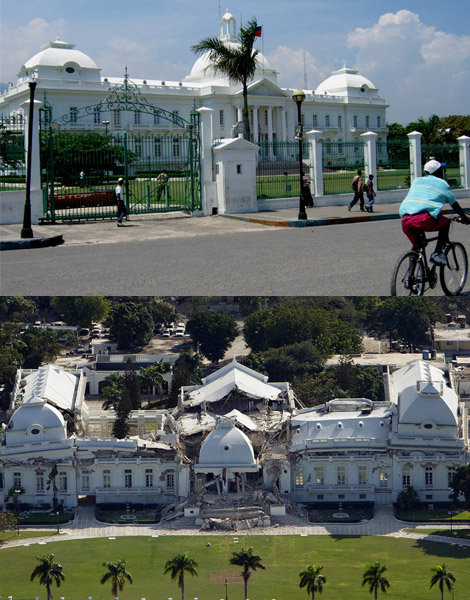Lessons from the Haiti Earthquake

Thousands of lives have been lost in Haiti after a major earthquake struck the southern region of the island nation two days ago. The earthquake reached a magnitude of 7.0 and occurred near the boundary between two major tectonic plates, the Caribbean and North American plates. The catastrophe knocked over power lines and caused buildings to crumble.
The disaster is an example of why programs such as Engineers Without Borders and Engineers for a Sustainable World are so sorely needed. Through these organizations, students are able to help developing countries by improving the safety and efficiency of their buildings and agriculture.
A Devastating Quake
Engineers and architects familiar with Haiti say that inadequate materials and a lack of construction standards contributed to the collapse of so many buildings. Because of mass deforestation, lumber is scarce, so most structures are built from poured concrete, which is very expensive and must be imported from the United States. Some contractors save money by adding more sand to the cement mix, which makes the material structurally weaker and causes it to deteriorate more quickly.
Since Haiti has not experienced an earthquake in over two centuries, more attention has been paid to making buildings hurricane-resistant. Haiti also lacks stringent building codes, so designs are often made without the proper safety precautions.
How You Can Help
The American Red Cross is a humanitarian organization and its primary focus during the initial response of an emergency is feeding, sheltering and supplying any other basic needs. To donate: Go to RedCross.org, hit donate now button at top and then International Response Fund. You also can text “Haiti” to 90999 to donate $10 to the International Response Fund. The money will go directly to relief efforts in Haiti. Or call 1-800-Red-Cross.
For a more comprehensive list of organizations that need your donations, see this page.
Images:
Upper – “Haiti – Presidential Palace” by M_Eriksson (Flickr Commons)
Lower – “Haitian national palace earthquake” by Alpalsola (Wikimedia Commons)
Filed under: Architectural, Civil, e-News
Tags: Architectural, Civil, Earthquake engineering








